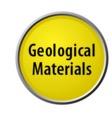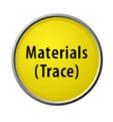OSAC Newsletter February 2016
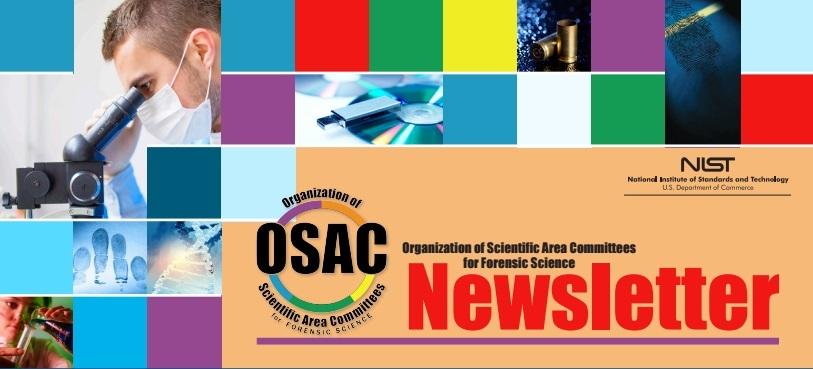
February 2016
Upcoming Public Comment Periods for Standards/Guidelines Under Consideration for the OSAC Registry | Status of Other Standards and Guidelines Recommended for Inclusion on the OSAC Registries | Recent OSAC Accomplishments: First Standards on OSAC Registry | Recent OSAC Meetings: Summary of Full OSAC Meeting January 26-29, 2016 | A Big Picture View of OSAC Efforts: Message to OSAC Members and Stakeholders | NIST's Role in OSAC | Standards Development News | Upcoming OSAC Meetings | OSAC Vacancies
Upcoming Public Comment Periods for Standards/Guidelines under Consideration for the OSAC Registry
The Materials (Trace) Subcommittee has submitted the following standards for consideration to the OSAC registry. The public comment period is open on the OSAC Kavi Public Workspace under "Documents".
The intent of the public comment period is to collect public opinion on inclusion of the standard to the OSAC registry (OSAC is not soliciting potential revisions to the documents themselves.) The following guidelines are open for public comment:
ASTM: E1610-14 Standard Guide for Forensic Paint Analysis and Comparison (for consideration as an OSAC Guideline)
This guide is designed to assist the forensic paint examiner in selecting and organizing an analytical scheme for identifying and comparing paints and coatings. The size and condition of the sample(s) will influence the selection of the analytical scheme.
ASTM: E2937-13 Standard Guide for Using Infrared Spectroscopy in Forensic Paint Examinations (for consideration as an OSAC Guideline)
This guide applies to the forensic infrared spectroscopy (IR) analysis of paints and coatings and is intended to supplement information presented in the Forensic Paint Analysis and Comparison Guidelines written by Scientific Working Group on Materials Analysis (SWGMAT). This guideline is limited to the discussion of Fourier Transform Infrared (FTIR) instruments and provides information on FTIR instrument setup, performance assessment, sample preparation, analysis and data interpretation.
The aim of the Organization of Scientific Area Committees for Forensic Science (OSAC) is to identify and promote technically sound, consensus-based, fit-for-purpose documentary standards that are based on sound scientific principles. This will be achieved through the OSAC Registry of Approved Standards and the OSAC Registry of Approved Guidelines. A standard or guideline that is posted on either Registry demonstrates that the methods it contains have been assessed to be valid by forensic practitioners, academic researchers, measurement scientists, and statisticians through a consensus development process that allows participation and comment from all relevant stakeholders.
Below is a listing of standards or guidelines that are under consideration for the OSAC registries, along with their status in the approval process.
Standards and Guidelines in Public Comment Adjudication Phase
Public comment period is closed for the following standards/guidelines as OSAC units review and adjudicate comments received.
ASTM: E2881-13e1 Standard Test Method for Extraction and Derivatization of Vegetable Oils and Fats from Fire Debris and Liquid Samples with Analysis by Gas Chromatography-Mass Spectrometry (for consideration as an OSAC Standard)
This test method covers the extraction, derivatization, and identification of fatty acids indicative of vegetable oils and fats in fire debris and liquid samples. This procedure will also extract animal oils and fats, as these are similar in chemical composition to vegetable oils and fats. Herein, the phrase "oils and fats" will be used to refer to both animal and vegetable derived oils and fats. This test method is suitable for successfully extracting oil and fat residues having 8 to 24 carbon atoms.
ASTM E2916-13 Standard Terminology for Digital and Multimedia Evidence Examination (for consideration as an OSAC Guideline)
This document provides standard terminology for the subcommittees of Digital Evidence, Facial Identification, and Video Imaging Technology and Analysis.
ASTM E2825-12 Standard Guide for Forensic Digital Image Processing (for consideration as an OSAC Standard)
This document provides digital image processing standards to ensure the production of quality forensic imagery for use as evidence in a court of law. It briefly describes advantages, disadvantages, and potential limitations of each major digital imaging process.
ASTM: E2330-12 Standard Test Method for Determination of Concentrations of Elements in Glass Samples Using Inductively Coupled Plasma Mass Spectrometry (ICP-MS) for Forensic Comparisons (for consideration as an OSAC Standard)
One objective of a forensic glass examination is to compare glass samples to determine if they can be discriminated using their physical, optical or chemical properties (for example, color, refractive index (RI), density, elemental composition). If the samples are distinguishable in any of these observed and measured properties, it may be concluded that they did not originate from the same source of broken glass. If the samples are indistinguishable in all of these observed and measured properties, the possibility that they originated from the same source of glass cannot be eliminated. The use of an elemental analysis method such as inductively coupled plasma mass spectrometry yields high discrimination among sources of glass. This test method covers a procedure for quantitative determination of the concentrations of magnesium (Mg), aluminum (Al), iron (Fe), titanium (Ti), manganese (Mn), rubidium (Rb), strontium (Sr), zirconium (Zr), barium (Ba), lanthanum (La), cerium (Ce), neodymium (Nd), samarium (Sm), and lead (Pb) in glass samples.
ASTM: E2548-11e1 Standard Guide for Sampling Seized Drugs for Qualitative and Quantitative Analysis (for consideration as an OSAC Standard)
This guide covers minimum considerations for sampling of seized drugs for qualitative and quantitative analysis.
ASTM: E2926-13 Standard Test Method for Forensic Comparison of Glass Using Micro X-ray Fluorescence (μ-XRF) Spectrometry (for consideration as an OSAC Standard)
This test method is for the determination of major, minor, and trace elements present in glass fragments. The elemental composition of a glass fragment can be measured through the use of μ-XRF analysis for comparisons of glass. This test method covers the application of μ-XRF using mono- and poly- capillary optics, and an energy dispersive X-ray detector (EDS).
Standards and Guidelines in the Appeals Phase
The public appeals phase is open for the following standard. Appeals may only be submitted by individuals or groups that submitted a comment during the open public comment phase that believe their comment was not properly adjudicated. Submitted appeals must relate to the comment adjudication process, not technical issues.
No items are currently in the public appeals phase.
Recent OSAC Accomplishments: First Standard on OSAC Registry
Invited input from Sandra Rodriguez-Cruz, Ph.D. U.S. Drug Enforcement Administration, OSAC Seized Drugs Subcommittee Chair.
One standard, ASTM: E2329-14 Standard Practice for Identification of Seized Drugs, was posted last month as an OSAC standard.
This first OSAC standard describes minimum criteria for the identification of seized drugs. This document, originally published by the Scientific Working Group for the Analysis of Seized Drugs (SWGDRUG), describes analysis schemes where two analytical techniques, at minimum, must be employed in order to reach a scientifically supported drug identification. The Seized Drugs subcommittee considered implementation of this standard practice throughout US forensic drug laboratories as the essential first step towards improving the discipline. This document also provides the platform for future Seized Drugs documents in the areas of sampling, quality assurance, and measurement uncertainty, among others.
Today, forensic drug laboratories throughout the US and the world routinely follow this standard. However, a mechanism to enforce the use of this standard has been lacking in the forensic community. Now that this standard practice has been placed on the OSAC Registry of Approved Standards, the enforcement of these minimum procedures is a real likelihood.
Recent OSAC Meetings: Summary of Full OSAC Meeting January 26-29, 2016
Despite travel delays and other challenges that arose due to the record-breaking blizzard of 2016, most OSAC members and invited guests were able to attend the OSAC's full internal meeting in Leesburg, VA on January 26-29, 2016. This second full face-to-face OSAC meeting was critical to keep the program on schedule in meeting OSAC objectives and to sustain the forward momentum gained over the past year's virtual meetings.
During the 4-day meeting, the 24 OSAC subcommittees hunkered down to produce the list of deliverables requested by the Forensic Science Standards Board (FSSB), including updated forensic science standards projects lists, documented research needs identified by the practitioners during standards discussions, and priority action reports summarizing their activities. These priority action reports will be shared publicly at the OSAC Scientific Area Committees Public Status Reports & Open Discussions on February 22-23, 2016 in Las Vegas, NV, in conjunction with the American Academy of Forensic Sciences (AAFS) Annual Meeting. The subcommittees also held other vital discussions relevant to their specific discipline. In addition to the subcommittee and other unit meetings, participants attended a plenary on January 27. Guest plenary speakers included Dr. Willie May, NIST Director; keynote speaker Amy Hess, Executive Assistant Director of the FBI, and guest plenary speaker Dr. Nancy Rodriguez, director of NIJ. All guest speakers emphasized how important OSAC outputs will be to a broad range of stakeholders, to include their agencies.
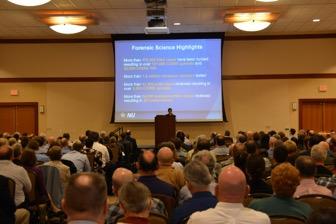
Dr. Nancy Rodriguez, NIJ Director, discusses the tremendous impact that will be gained from the OSAC registries, and indicates that NIJ intends to pay particular attention to the research needs identified by the OSAC.
Immediately following the plenary, a training session was provided by the QIC (in response to membership requests for more training and clarity on OSAC processes). As part of that training, Scott Oulton, Associate Deputy Assistant Administrator, DEA Office of Forensic Sciences and the OSAC Chemistry SAC chair provided an overview of the benefits and challenges of working with an SDO. He described his experience and acknowledged that while achieving consensus at an SDO can be at times cumbersome, the reward is often a more robust, sustainable product that has "achieved international acceptance, and more gravitas" than it would have otherwise.
The OSAC is still compiling and synthesizing the deliverables provided by the various units and intends to consolidate them in an annual report, to be released in Spring 2016. For more information, contact forensics [at] nist.gov (forensics[at]nist[dot]gov).
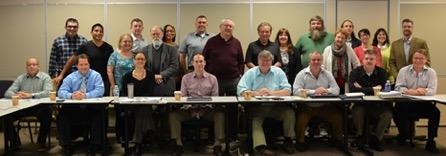
The Forensic Document Examination Subcommittee Meeting

The Medicolegal Death Investigation Subcommittee Meeting
A Big Picture View of OSAC Efforts: Message to OSAC Members and Stakeholders
Invited input from John M. Butler, Ph.D. (NIST Fellow & Special Assistant to the Director for Forensic Science)
John M. Butler has a unique perspective on OSAC as a member of the Biology/DNA Scientific Area Committee and as someone who was part of the initial NIST team that designed the overall OSAC structure. He is also Vice-Chair of the National Commission on Forensic Science.
Change is always challenging, and context often helps when coping with change. When we see a big picture view and how we fit into that big picture, then we can better appreciate our specific roles and execute them more effectively. In addition, it is important to keep in mind that new organizations take time to develop mature processes and thus patience is required in the early stages of any successful endeavor.
At the recent OSAC meeting held in Leesburg, I noticed some frustration on the part of individuals who were trying to decide how to craft language and consider scope for documents under development. Although the OSAC plenary session included presentations on Standards Developing Organizations (SDOs), working with SDOs, and the importance of technical merit in standards developed, I think that without an understanding of the big picture the value of these presentations may not have been fully appreciated by many who attended. In fact, the role of SDOs relative to OSAC efforts appears in some cases to be misunderstood.
Before the end of the OSAC meeting in Leesburg, I decided to sketch out a big picture view of what OSAC is trying to accomplish in efforts to strengthen forensic science. An image similar to what is shown here was used in short presentations to the Biology SAC and the Friction Ridge Subcommittee and is now being shared with a wider audience.
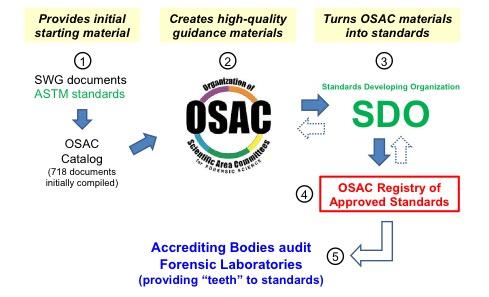
Snapshot of the OSAC "Big Picture"
An important purpose of the OSAC effort is to populate an OSAC Registry of Approved Standards, which can then be used by accrediting bodies to audit forensic laboratories during their accreditation review against discipline-specific requirements. If the OSAC process works as planned, then the documentary standards and guidelines on the OSAC Registry can be trusted to be of high-quality. Producing a high-quality document requires both technical merit and appropriate due process in standards development.
From a big picture view, there are five steps in preparing, producing, and using information on the OSAC Registry of Approved Standards. Each of these will be reviewed below. Future OSAC newsletters may include more detail on aspects of this OSAC "ecosystem."
1. Use Existing Content, if it is Available. First, rather than "re-inventing the wheel" initial starting material is available to the OSAC from previous efforts in the forensic science community. As Isaac Newton famously shared about the value of scientists learning from previous work: "If I have seen further than others, it is by standing upon the shoulders of giants." Numerous documents have been produced over the years by Scientific Working Groups (SWGs). These SWG documents, while providing helpful guidance from a few practitioners to a larger group of practitioners, have not been through a rigorous process of vetting with what is referred to in the standards world as a "consensus body" and therefore simply rubber-stamping these SWG documents would not provide an opportunity to improve and strengthen them.
In early 2015, an OSAC Catalog of External Standards and Guidelines was compiled by NIST staff in an effort to bring together existing standards, guidelines, and best practices that were already available. Of the 718 documents listed in the initial 2015 OSAC catalog, 344 are from 20 different SWGs. In addition, there are over 300 documents from US and other standards developing organizations, of which there are approximately 140 ASTM documents. These SDO documents have been through a reasonable standards developing process, but may not have been previously vetted to the quality level desired for being included on the OSAC Registry.
2. Use Existing OSAC Resources to Enhance Content. The OSAC process may involve review of initial SWG documents, existing SDO standards and guidelines, and other materials, creation of new guidance materials, and deliberations on the quality of existing documents. In addition to forensic practitioners, the OSAC subcommittee membership includes academic researchers, statisticians, and measurement scientists to help infuse a deeper scientific viewpoint on discussions and documents. Feedback from three resource committees within OSAC can provide further input to strengthen documents in areas involving quality, laboratory impact, legal ramifications, and human factor aspects of guidance materials being developed.
3. Partner with an SDO. OSAC is not a legal entity and does not have the authority to create voluntary consensus standards by itself, nor is OSAC a standards developing organization in the true sense of the term. NIST, which currently administers OSAC, follows the federal government standards policy known as the National Technology Transfer and Advancement Act of 1995 (NTTAA) and the Office of Management and Budget's (OMB) Circular A-119 last updated in 1998. Therefore, in order to turn OSAC documents into formal, recognized standards, OSAC needs to partner with an SDO (Standards Developing Organization). SDOs use consensus bodies of interested stakeholders to evaluate or create standards. It is important to point out that OSAC members may be part of an SDO's consensus body to help shepherd a document through the process.
An SDO is a legal entity created for the express purpose of developing consensus standards through following due process. Coordination of the private sector-led standards system for the United States is performed by the American National Standards Institute (ANSI). Each year ANSI publishes the ANSI Essential Requirements for Due Process that SDOs must follow to be accredited by ANSI. These requirements include openness, lack of dominance, a balance of interests, coordination and harmonization between existing documentary standards, notification of standards development (i.e., a public comment period) to enable participation by anyone who may be affected by the standard, careful consideration of views and objections raised by all participants, a consensus vote, and an appeals process.
The American Academy of Forensic Sciences (AAFS) recently established the Academy Standards Board. Another SDO that has worked with the forensic community since 1970 is ASTM International.
Process matters in creating acceptable standards within an SDO. These steps all take time and therefore standards development time is often measured in months or even years instead of days or weeks. But the benefit of a well-run standards development process is that the document has been refined and polished during multiple stages of review from considering various perspectives during document development. The dotted arrow on the image suggests that following the SDO process of turning OSAC documents into a formal standard, it may go back to OSAC deliberations to see if the document is "fit-for-purpose" – and if not, then additional round(s) of development may be required if OSAC wants to consider putting this standard on its Registry of Approved Standards.
Standards hold users to specific requirements through use of language such as "shall" or "must". Guidelines on the other hand use "should" or "may" to indicate best practices that may not be as stringent as the demands of a standard. Standards can come in many forms. For example, ASTM produces documentary standards in the form of guides, practices, test methods, specifications, classifications, and terminology documents. Anyone working on writing guidance material that can be turned into a standard would benefit from reviewing and carefully reading previously written standards to get an idea of the length and scope of the documents.
4. Next Goal: OSAC Registry. The OSAC Registry of Approved Standards is intended to serve as a trusted repository of high-quality standards to address discipline-specific requirements. Standards under consideration for inclusion on the OSAC Registry will need to pass muster in terms of both process (mentioned above in section 3 on SDOs) and technical merit. Technical merit means that the document has appropriate scope, is "fit-for-purpose", makes appropriate consideration for potential bias and uncertainty in measurement, and represents a reliable method as defined by validation studies performed that assess the limitations of the technique.
Although the initial process is the same, OSAC was designed to permit guidelines to be put on the OSAC Registry of Approved Guidelines with subcommittee and SAC approval. Inclusion of standards on the OSAC Registry of Approved Standards requires an additional approval at the FSSB level. However, having documents included on the OSAC Registry of Approved Standards (or Guidelines) does little good if no one uses them or "enforces" them.
5. Implementation. Holding forensic laboratories to the details present in documentary standards is the fifth and final step in our OSAC big picture view. This step involves accrediting bodies providing "teeth" to the standards while assessing the capabilities of and auditing accredited forensic laboratories. Current accrediting bodies in the forensic science world include the American Society of Crime Laboratory Directors/Laboratory Accreditation Board (ASCLD/LAB), the ANSI-ASQ National Accreditation Board (ANAB), and the American Association for Laboratory Accreditation (A2LA). A representative from each of these organizations sits on the Quality Infrastructure Resource Committee of OSAC.
When OSAC was originally being designed, the NIST team met with representatives of these three accrediting bodies and several others interested in forensic accreditation. There was agreement among the attending representatives that if OSAC would build a system to create and promote quality standards, then they (the accrediting bodies) would identify how to best incorporate these standards in their future conformity assessment of forensic laboratories. While accredited laboratories are audited today to ISO/IEC 17025, there are very few discipline-specific documentary standards that the laboratories can be audited against. Currently, the use of forensic specific or discipline-specific standards is not required by law. The only exception is forensic DNA laboratories that are held to the FBI Quality Assurance Standards due to Congressional mandate from the DNA Identification Act of 1994.
Why does having a better understanding of this OSAC "ecosystem" matter?
Hopefully seeing the big picture will help forensic practitioners, who have previously only known how SWG documents or laboratory protocols were created, to move beyond their current SWG world view. Simply documenting protocols does not turn them into standards. A reasonable standards development process and careful consideration of technical merit may mean that some SWG documents or even previous ASTM standards do not make the cut and not end up on the OSAC Registry of Approved Standards (or Guidelines). Populating the OSAC Registries is intended to provide trusted discipline-specific standards that accrediting bodies can use to audit forensic science service providers.
If you are an OSAC member or affiliate trying to draft guidance material that may become a standard, it will be helpful to read previously written standards perhaps from other fields just to get a flavor of how standards are written. In some cases, it can be better to have a suite of standards that are interlocking rather than a single large document trying to be all things to all users. A good standard will be focused, concise, and specific so that a laboratory can be effectively audited against the listed requirements.
OSAC and SDOs should not be expected to rubber-stamp SWG documents. If we are just attempting to protect our own protocols or simply "kick the can down the road", then we will not move the forensic community forward with the science available in the 21st century. Culturally, this may be very hard to do. It is natural that we become emotionally invested in what we write. Therefore, it becomes a challenge for any author to be able to see their document in a critical fashion. Hence the reason why feedback from stakeholders and future users of the documents we create is so important – to gain additional valuable perspective, to see things that we cannot see when we are too close to a document. Unfortunately, we may feel that comments and suggestions made to a document are personal attacks rather than opportunities to improve and strengthen a document. If we can move past our personal feelings as we move documents through the OSAC process, we have the potential to strengthen the entire field when the final, improved document is completed and used.
The processes touched upon here will make more sense as they are tried and tested—and perhaps refined as OSAC matures. We are very early in this effort to move the entire forensic community forward onto more sound scientific footing. The creation of rigorous scientific standards that will stand the test of time and the scrutiny of the legal system is a large endeavor and will require the commitment and engagement of the entire community to succeed. In pacing ourselves as we work on OSAC and SDOs to strengthen the forensic community, it is worth remembering that we are running a marathon and not a sprint.
----------
For more information on standards and the OSAC Registries, see the presentation given by members of the NIST Standards Coordination Office to the National Commission on Forensic Science in January 2015. These slides are available at http://www.justice.gov/sites/default/files/ncfs/pages/attachments/2015/02/19/day1-nist_standards-training-jan2015-final.pdf.
At the plenary session during the Full OSAC Meeting in Leesburg, VA, NIST Director Dr. Willie May welcomed the OSAC and thanked them for all their dedication and hard work.
Dr. May described that NIST work[s] with the private sector to develop documentary standards. NIST has become the nation's go-to agency for measurements, standards, and technology. As such, NIST has one of the most diverse forensic science research divisions without being involved in crime scene investigations. Forensic science efforts at NIST include NIST internal research programs, the NIST Forensic Science Center of Excellence, the International Symposium on Forensic Science Error (which boasted 432 participants), the National Commission on Forensic Science, and the OSAC, Organization of Scientific Area Committees.
OSAC is NIST-administered and is facilitating the establishment of documentary standards and best practices, along with strengthening the nation's use of forensic science. It has been charged with helping to develop and disseminate consensus-based documentary standards and guidelines, determining each forensic science discipline's research and measurement standards needs, and ensuring that a sufficient scientific basis exists.
NIST follows the National Technology Transfer and Advancement Act of 1995 (NTTAA), which requires the use of voluntary industry standards whenever possible.
Standards placed on the OSAC Registries of Approved Standards and OSAC Registry of Approved Guidelines have demonstrated technical merit and a reasonable standards developing process. Technical merit includes a detailed scope, examination of fitness for purpose, consideration of uncertainty measurement and potential bias, and method validation as appropriate. A reasonable standards developing process includes due process, consensus, openness, transparency, freedom from undue influence, and balance of interests.
The American Society of Crime Laboratory Directors (ASCLD), through its membership in the American National Standards Institute (ANSI), chairs the U.S. Technical Advisory Group (U.S. TAG), for ISO/TC 272 Forensic Science. The TAG is pleased to announce that the first document from this committee has been finalized for publication, ISO 18385:2015 "Minimizing the risk of human DNA contamination in products used to collect, store and analyze biological material for forensic purposes – Requirements". In December, the ISO/TC 272 Forensic Science Committee embarked on the creation of a new ISO Standard, "Forensic Analysis". This standard will focus on the recognition, recording, collection and storage of material (Crime Scene/Evidence). This standard, along with future forensic standards, is designed to preserve the features of evidence that are subject to observation and to maintain the integrity of evidence through each stage of testing. It is also designed to facilitate information sharing between international jurisdictions. The U.S. TAG will be meeting on Sunday, February 21st at the AAFS Symposium to inform our stakeholders in the work of the U.S. TAG in the field of Forensic Science. The meeting will take place from 8:00 – 5:00 in the Tropical C Room.
Kermit B. Channell II, U.S. TAG Chair
The Academy Standards Board (ASB) of the American Academy of Forensic Sciences (AAFS) is an ANSI-accredited Standards Development Organization. It is announcing the formation of two new Consensus Bodies: DNA and Wildlife Forensics. Each will have 7 to 25 members based on applications received. Members will be selected by the Board of Directors of the ASB. The ASB has eight interest categories. Applicants are encouraged to apply in their self-selected interest category. A person may apply to one or both Consensus Bodies and need not indicate the same interest category for each Consensus Body application. An on-line application form is available. The website also contains links to several relevant documents describing the ASB. Applicants are requested to submit forms to be considered for serving on the DNA and/or Wildlife Forensics Consensus Bodies by March 15.
Questions: Teresa Ambrosius, TAmbrosius [at] aafs.org (TAmbrosius[at]aafs[dot]org), 703-980-2555
The Academy Standards Board (ASB) of the American Academy of Forensic Sciences (AAFS) is an ANSI-accredited Standards Development Organization. It is announcing the formation of three new Consensus Bodies: Digital Evidence, DVI - Disaster Victim Identification, and Friction Ridge. Each will have 7 to 25 members based on applications received, members will be selected by the Board of Directors of the ASB. The ASB has eight interest categories, applicants are encouraged to apply in their self-selected interest category. A person may apply to one or both Consensus Bodies, and need not indicate the same interest category for each Consensus Body application. An on-line application form is available. The website also contains links to several relevant documents describing the ASB. Applicants are requested to submit forms to be considered for serving on the Digital Evidence, DVI – Disaster Victim Identification and/or Friction Ridge Consensus Bodies by March 29.
Questions: Teresa Ambrosius, TAmbrosius [at] aafs.org (TAmbrosius[at]aafs[dot]org), 703-980-2555
- (Open to the Public) OSAC Scientific Area Committees Public Status Reports & Open Discussions occur at the American Academy of Forensic Sciences (AAFS) in Las Vegas, NV on February 22-23, 2016.
- At this public meeting, all OSAC units (5 SAC chairs and 24 Subcommittee chairs) will present their unit's progress to the public, and solicit open discussion on topics presented. The OSAC invites all to attend and participate.
- NIST OSAC Affairs has partnered with the National Institute of Justice's (NIJ's) Forensic Technology Center of Excellence operated by RTI International to broadcast this event to all interested stakeholders.
- Please register to attend this free on-site event or watch the live webcast. The meeting will be webcast live starting at 8:00 a.m. PST on Monday, Feb. 22.
- (Internal OSAC Meetings) The next full OSAC meetings are scheduled for summer 2016, in Phoenix, AZ. Instead of meeting as one large group, the OSAC will separate into a series of smaller meetings.
- (OSAC Meeting Breakout #1) Legal Resource Committee, Quality Infrastructure Committee, and Human Factors Committee, Jul 12-13, 2016
- (OSAC Meeting Breakout #2) Digital/Multimedia SAC + 4 Subcommittees, Physics/Pattern SAC + 5 Subcommittees, Jul 26-29, 2016
- (OSAC Meeting Breakout #3) Chemistry SAC + 6 Subcommittees, Aug 2-5, 2016
- (OSAC Meeting Breakout #4) Biology/DNA SAC + 3 Subcommittees, and Crime Scene SAC + 7 Subcommittees, Aug 23-26, 2016
- (Internal OSAC Meeting) The following full OSAC meeting is scheduled for April 3-7, 2017, tentatively in Leesburg, VA.
The Geological Materials Subcommittee and the Materials (Trace) Subcommittee are seeking additional stakeholders to apply for their subcommittees. To apply, complete the OSAC Application Form.
